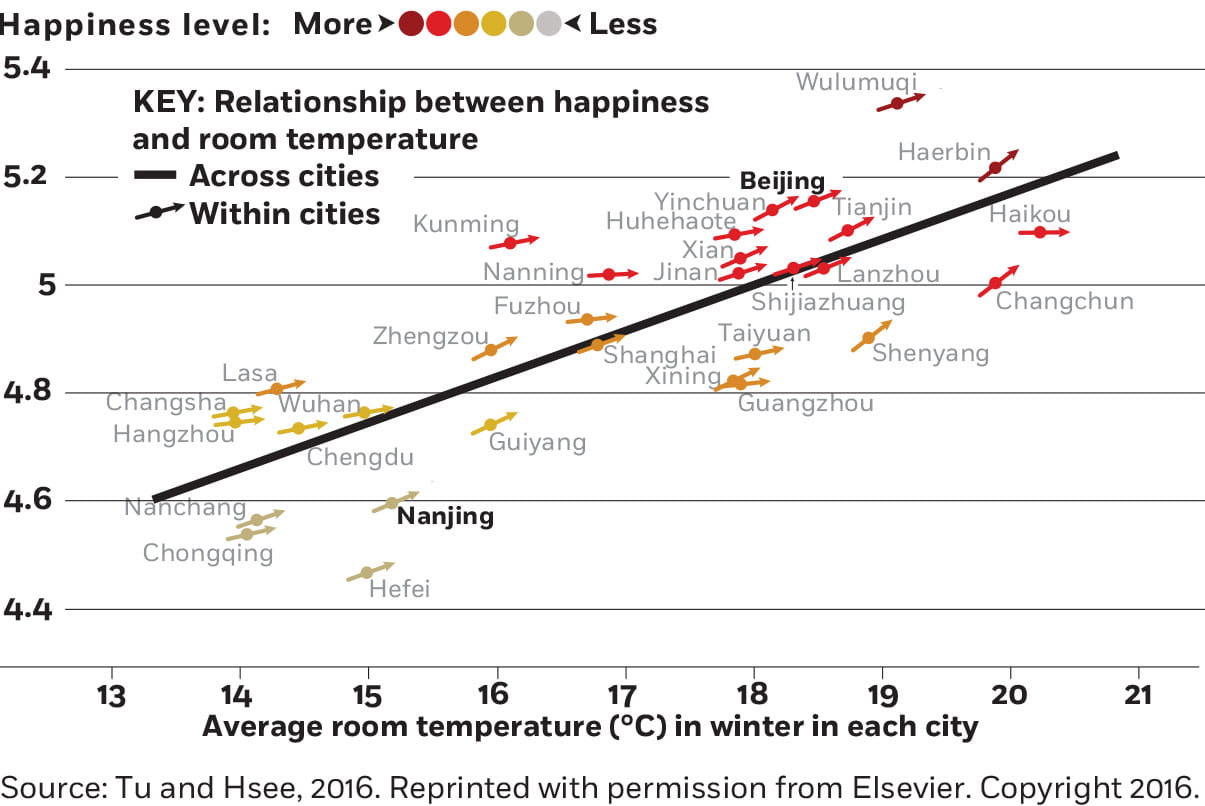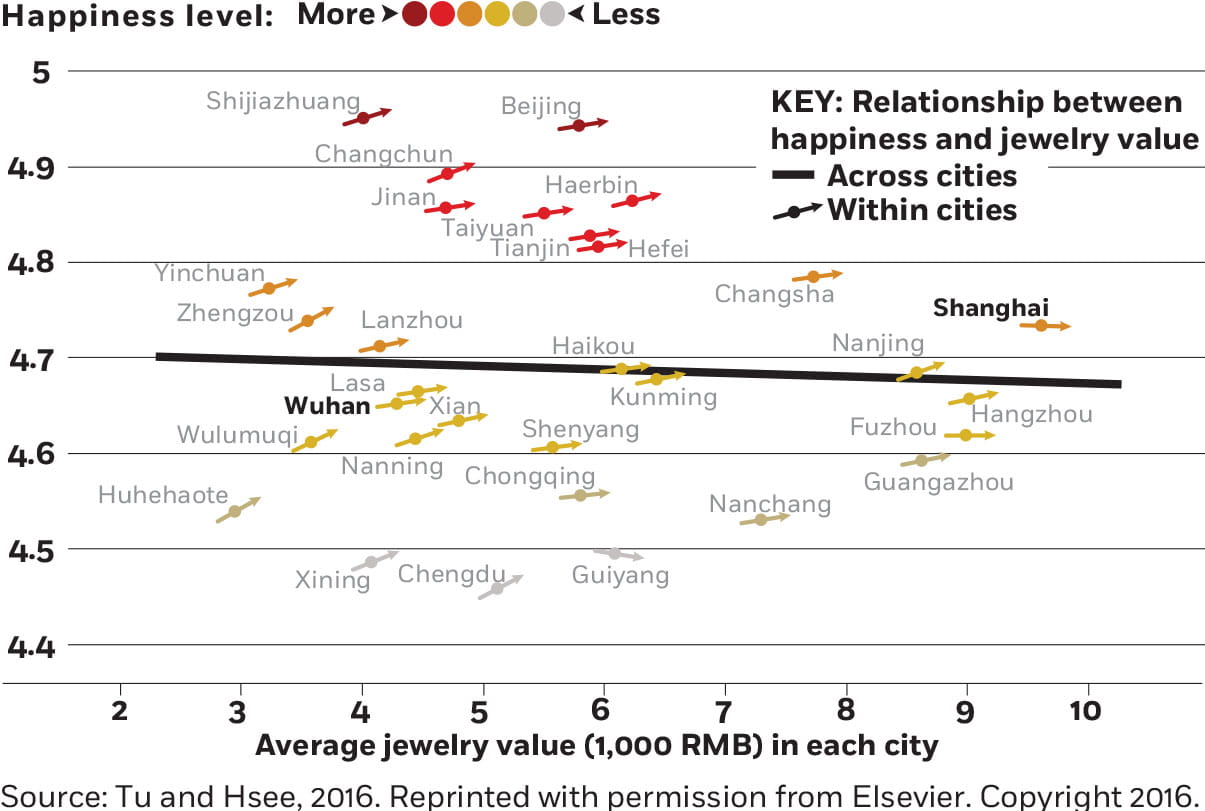
The Danger of Resentment and Social Exclusion
A Q&A with Chicago Booth’s Alex Imas about the desire for exclusivity.
The Danger of Resentment and Social ExclusionWhen it comes to “buying” happiness, there are good and bad investments. Things that appeal to us because of “learned preferences”—for instance, luxury goods—may provide less long-lasting happiness than things we desire because of a hardwired biological preference, according to research by the University of Florida’s Yanping Tu and Chicago Booth’s Christopher K. Hsee. The authors cite interviews Hsee and a group of coresearchers conducted with residents of 31 Chinese cities about happiness derived from the ambient room temperature in their homes during winter (a hardwired, inherent preference) and that derived from the value of their jewelry (a learned preference). The results suggest happiness from learned preferences is highly context dependent.
Happiness with room temperature is absolute.
In winter, people derived more pleasure from their ambient room temperature the warmer it got. The effect held within and across cities—home temperatures are higher in Beijing (due to standard heating) than in Nanjing, and also tend to provide Beijing residents with more happiness—suggesting that home-climate happiness isn’t due to social comparison.

Happiness with jewelry is relative.
Within cities, people with more-valuable jewelry tended to be happier than those with less-valuable jewelry. But the same wasn’t true across cities: residents of Wuhan and Shanghai derived similar amounts of happiness from their jewelry, despite a dramatic contrast in its value, suggesting that happiness that comes from jewelry value is based on social comparison.


A Q&A with Chicago Booth’s Alex Imas about the desire for exclusivity.
The Danger of Resentment and Social Exclusion
Machine learning can help identify new hypotheses to test.
What’s the Next Big Question in the Social Sciences? Ask an Algorithm
The order in which customers approach vendors can affect how prices are set.
How ‘Riding Coattails’ Can Help Counter DiscriminationYour Privacy
We want to demonstrate our commitment to your privacy. Please review Chicago Booth's privacy notice, which provides information explaining how and why we collect particular information when you visit our website.